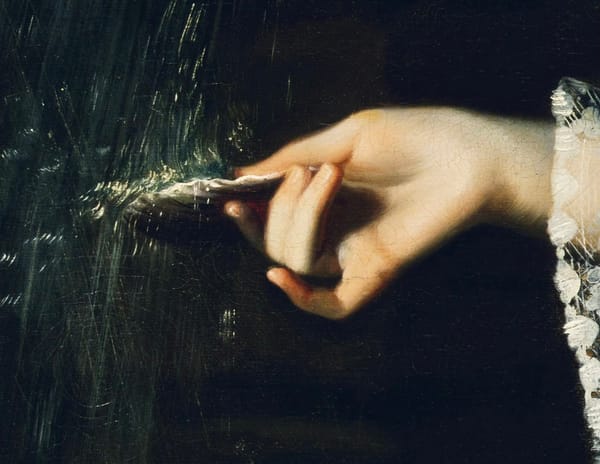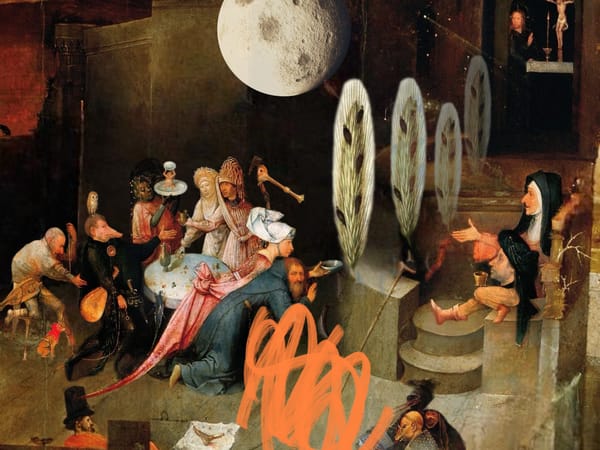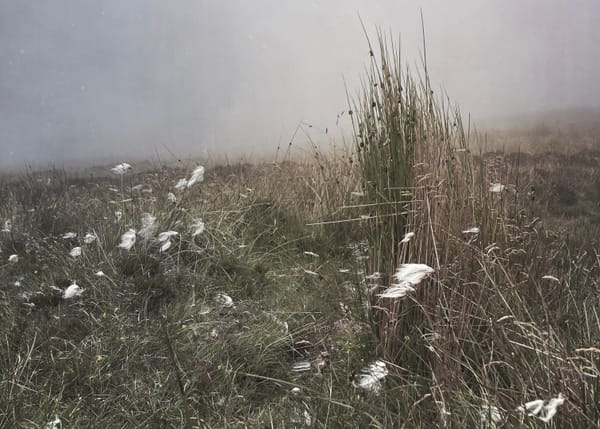HAUTE CONVALESCENCE
at the waxing Rose Moon
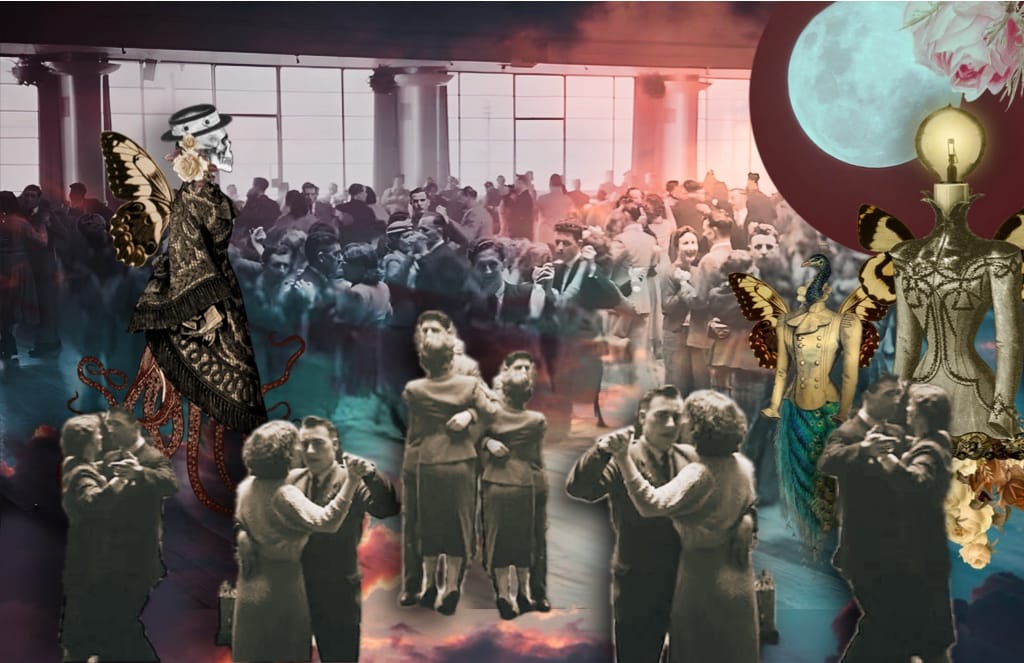
This month’s full moon longer read is free. Paid subscribers make this possible!
I buy my groceries at the Tesco in Kirkwall. My tofu and Cavalo Nero and all their attendant food miles are read by the blinking red light and tossed down the length of the checkout by a woman sporting false eyelashes and a severe fringe. Okey-Dokey, she says in her American, midwestern twang. Okey-dokey…how many years has it been since I’d heard that? I think I’ve acculturated and any homesickness for America has long since been tidied away, and yet it seems a certain accent, a hokey phrase can awaken it.
She doesn’t meet my eyes—as if to say, let’s not take this any further.
I think about a lot things during my three weeks of bedrest—doctor’s orders. I hole up, read books, scroll Mastodon and watch runway shows on YouTube. As a sick young woman I poured over Vogue Italia—imagining not wealth nor thinness but the ability and desire to get dressed, to adorn. I look at runway shows the way someone might keep track of a favourite sports team. Oh, this year Gautier sent his models under a bridge. Balmain is using elder models carrying mesh bags full of rocks—It gives me the illusion I’m keeping abreast of something that isn’t grim tides of war and climate apocalypse.
My favourite Dior campaign—and it confounds me that I have one—is the 2021 Haute Couture show inspired by Claire Hunter’s Book Threads of Life. The film created for the collection is a fairy tale paying homage to Ovid’s Metamorphosis, and the mythopoesis of the Pre-Raphaelites. It is set to Erik Satie’s exquisite Gnossienne no. 1. [As an aside, I love Tori Amos’ interpretation of no.1, called Battle of Trees—where two Celtic poets do battle to save the Goddess—but I digress. Her storytelling of this ‘alchemical marriage’ is worth watching in the video below.]
I recuperate watching the Dior cruise shows. A cruise collection was traditionally a warm weather collection of resort clothing, but recently designer Maria Grazia Chiuri has travelled with the each collection, embodying women’s stories in different locales. In 2023 the designer went full of grand duende in Spain with matador motifs & flamenco shawls—everything’s black, white and red all over. There’s choreography and an orchestra and tireless flamenco dancers. The collection from 2022 is a surreal, classical spectacle set in Athens. The models wear massive white trainers or hazmat wellies with their deconstructed gowns as they pace an Olympic track that seems to be on fire. In 2021, A carnivalesque light show in Puglia sees more dancers alongside meme truisms lit up a la Jenny Holzer. The models all look like angry nurses.
Last year, I wrote about the Dior Cruise show of 2024—staged in Mexico as a stunning homage to Frida Khalo. It incorporated activist statements against femicide and the powerful work of Mexican textile artists.
I’ve never been on a cruise (save that miserable time on the stormy Norwegian sea where I cracked a rib…). I’ve backpacked—never toured—yet I’m often mistaken for a tourist. It’s the first thing people think of me when they hear the American, midwestern twang my voice.
I watch cruise wear runway shows and imagine—what are the clothes for? Surely not the Love Boat sort of excursions I imagined as a child in the American midwest of the 1970s parked in front of the telly with grandma. The Okey-Dokey of the Tesco checker echoes in my brain. I left the US nearly twenty years ago, but that lilting phrase, with its optimistic finality, pierces me. Okey dokey. Bagging my double oat cream, I do the unthinkable that day. I ask Are you American? Tortured and self-conscious and rhetorical—it’s out. You know what she says?
My whole life. She doesn’t meet my eyes—as if to say, let’s not take this any further.
My whole life—I can’t say the same. Legally, I am Scottish. I’ve carry a British passport. I’ve been in the UK for 19 years. Imagine what can happen in 19 years—a child can be born, complete their schooling, and reach legal adulthood. Consider what you were doing 19 years ago. Imagine having to start over—your ‘foreign’ experience discounted by colleagues, strangers, potential allies and institutions. What are you left with?
As I type this, massive cruise ships—floating hotels—line up at the port in Kirkwall. I need only walk out from the housing scheme—if only I could!—to see the smaller boats ferrying tourists back and forth. None wear Dior cruise couture; they’re layered in trekking gear fresh out of the packaging as they swarm the tiny Viking settlement of Kirkwall. They queue and wait—for what?
Scottishness, perhaps, or Scottish fictions. A jewellery shop on the high street sells rings in the shape of the Neolithic Ring of Brodgar, as well as Craigh na Dun, the mythical stone circle in Outlander. The first time I saw this souvenir I was taken in. Having never read Outlander, I thought there was a mysterious stone circle I didn’t know about. I’m fascinated by the stories Scotland tells about itself, tales devoured by tourists storming the island. Some are looking for an authentic sense of place while others travel to the mainland to find fiction—Winterfell from Game of Thrones (Doune Castle in Sterling), Cranesmuir from Outlander (Culross in Fife), or shooting locations from Shetland. Perhaps future tourists will look for the Scottishness of the Dior Cruise 2025 show.
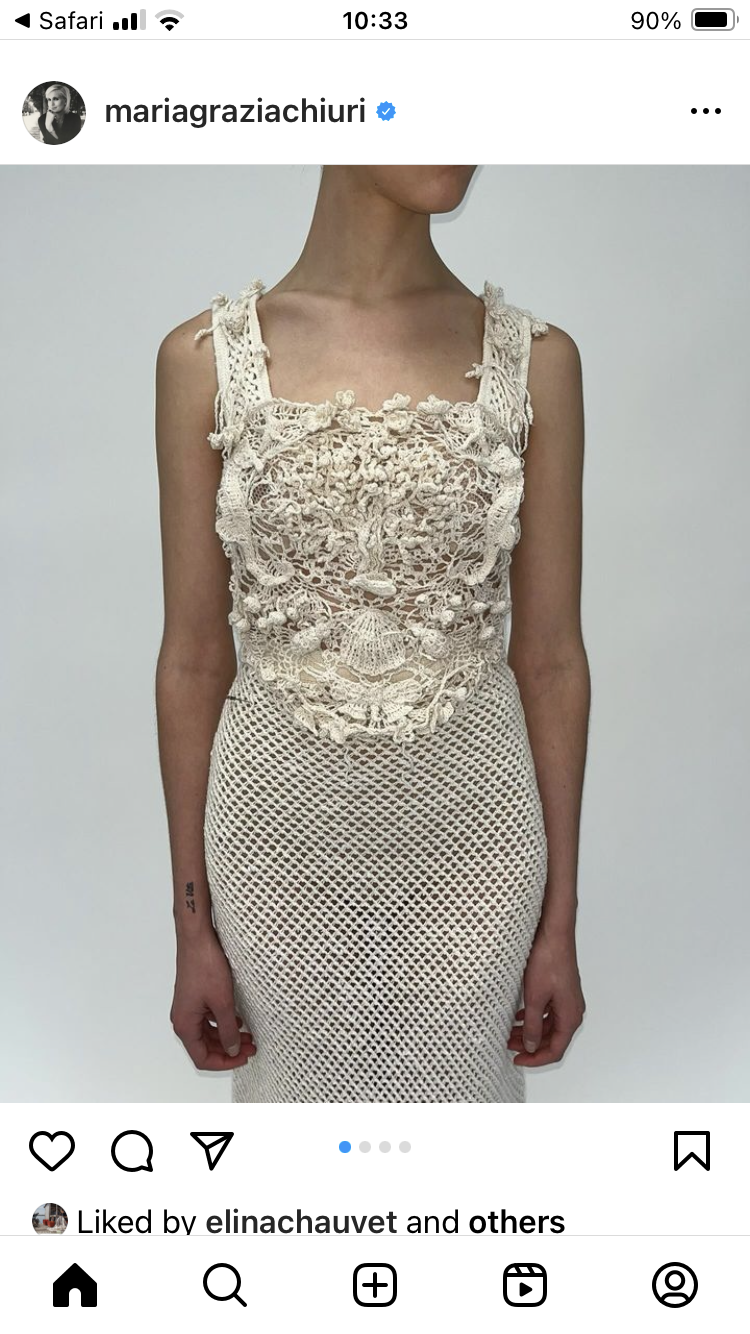
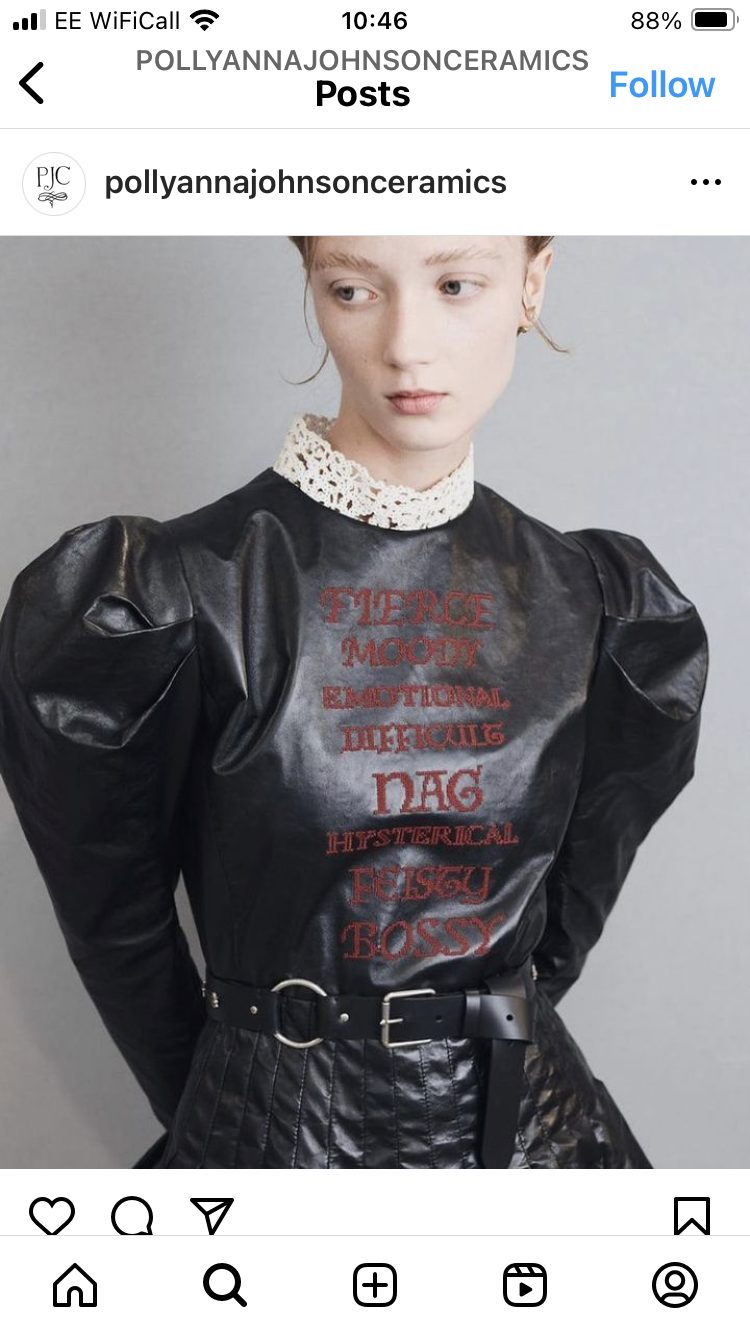
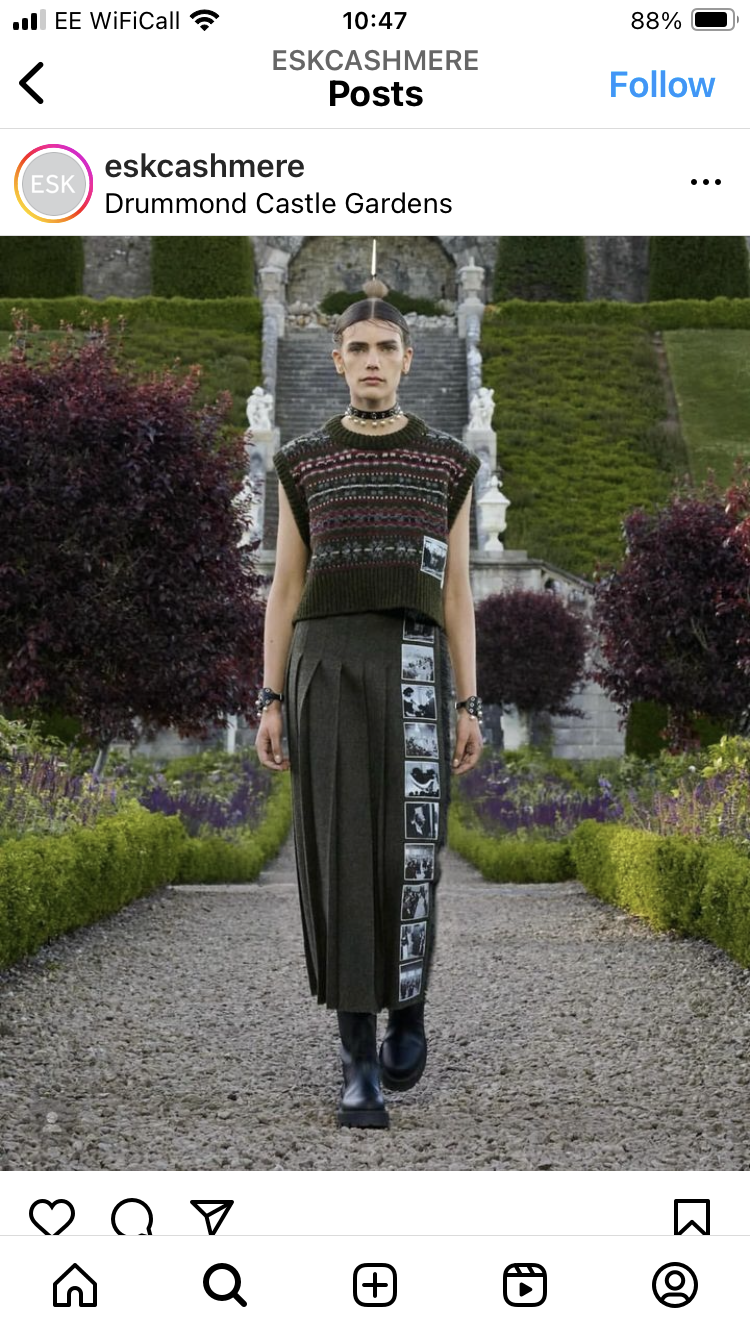
The Dior Cruise 2025 was held in Perth this month. I wondered if it would follow in the mode of the glorious show of last year. What stories of Scottish women’s resilience and resistance will be told? Chuiri was inspired by Claire Hunter’s book, Embroidering Her Truth, about the needlework of Mary Queen of Scots. I love that a couture line could be inspired by a work of historical nonfiction, and I was excited for a Scottish story in the Dior show. I wanted the dignity and passion that is at the heart of many heroic Scottish stories.
Chuiri collaborated with the Hebridean makers of Harris Tweed, with cashmere makers from Elgin and other Scottish textile producers. Intense research into history was involved, but all that was undone in the actual clothing. I couldn’t see the narrative thread, eclipsed by the overwhelming gardens—so much lonely walking and weird leuks. Grandad eyebrows, sheer dresses with braless models in Spanx undermined any dignity. And there’s that squishing of Scotland into Britishness: a nod to Vivian Westwood’s English punk melds with English club goth and wonder cabinets of Enlightenment.
There’s also a smattering of the souvenirs of national identity, ancestral tokens: acidic heather-purple and crotal yellow tartans worthy of Brigadoon. Sporrans, floor-length kilts and jaunty tams with some Fair Isle knitwear—but not enough to count—are sent down the runway. There’s a map of Scotland worn like a poncho. Embroidered trench coats, oversized hunting jackets, faux chainmail, and real bloody fur are layered over Irish crochet. The silhouettes are a mix of asymmetry and angular Jacobean shapes. Some of the stomachers feature embroidered words in a Celtic medieval font—but the words are not in Scots nor Gaelic, but English. One features the word “NAG” prominently. I wish it were embroidered instead with that brilliant Scottish word—Smeddum—a word describing an astute and and outspoken person with a BS meter. It was a quality that damned so many women during the Scottish witch hunts.
The show was staged at the Baroque gardens of a Drummond Castle in Perth, the seat of a Baroness. The gardens appeared in the show Outlander—albeit to represent Versailles’ gardens. The runway show features countless models pacing the gardens, lost amongst the structured greenery. A live pipe band plays a composition written specifically for the show, yet the official Dior video overdubs this with some swelling Braveheart synthwash, as if bagpipes go too far, are too Scottish.
Like last year’s cruise show, all the looks feature massive, stomping boots and low heeled shoes—like the trainers in the Athens show—this is a relief. There is a moment when the models are coming down the treacherous, lichen bitten stairs one after the other. They are in stone coloured lace and mesh, looking elemental, as if they have come up from the Scottish earth itself. Look close—this is my favourite part—there’s a nod to Black style. Edges* of super-groomed, baby hair frame each impassive face with its own ungovernable weather.
*It has been brought to my attention that this mention is mystifying. Edges are an art form in themselves, an integral part of natural hairstyles. The are the tiny hairs around the temples and forehead, styled with a toothbrush and gel. This is complex, and all style is political. I realise this opens a discussion of cultural cooptation. The stylist for the Dior show, Guido Palau, is white. He was clearly inspired by Black style, and many of the models are POC. I like that a subtle element of Black style is included in this Scottish show—and that the models are diverse.

